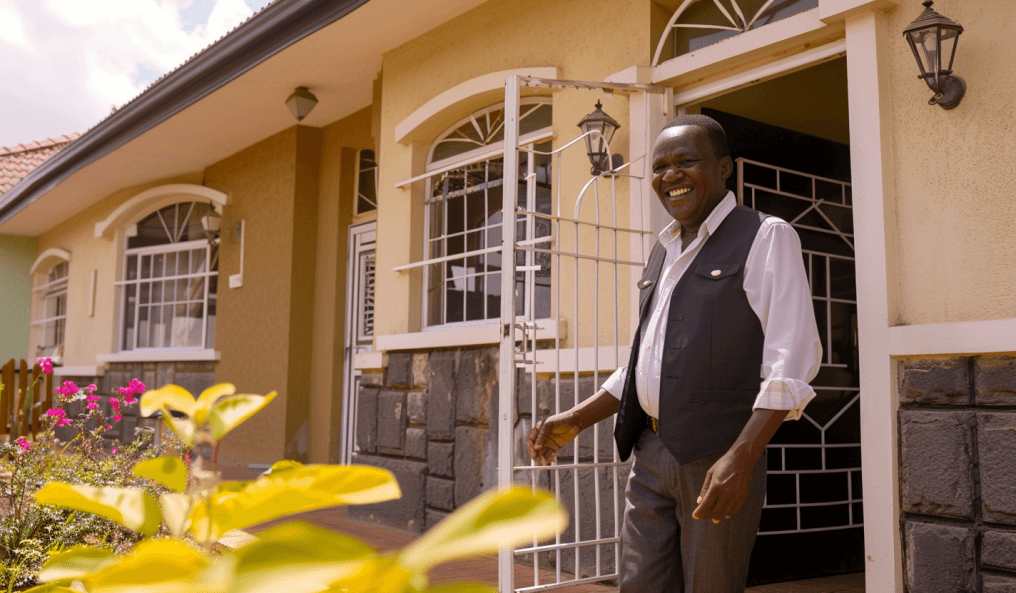Your home is likely one of your most significant investments. In Kenya, safeguarding this asset against unforeseen circumstances is paramount. Home insurance provides financial protection against a range of perils, from natural disasters to burglaries. While often overlooked, especially by first-time homeowners, securing the right home insurance policy is a crucial step in responsible property ownership. This step-by-step guide will walk you through the types of home insurance available in Kenya, what they cover, how to choose the best policy, and the process of making a claim in 2025.
1. Why is Home Insurance Essential in Kenya?
Kenya, like any other country, is susceptible to various risks that can impact your property. These include:
- Natural Disasters: Floods (as seen in recent El Niño rains), earthquakes, and storms can cause extensive damage.
- Fires: Accidental fires can lead to catastrophic losses.
- Theft and Burglary: Protecting your belongings from theft is a major concern.
- Accidental Damage: Unforeseen incidents within your home can be costly.
- Third-Party Liability: If someone is injured on your property, you could be held liable.
Home insurance acts as a financial safety net, absorbing these potential costs and providing peace of mind, ensuring your investment is protected in 2025.
2. Understanding Types of Home Insurance in Kenya
Home insurance typically comes in a few main forms, often bundled for comprehensive coverage:
- Buildings Insurance: This covers the physical structure of your home, including the walls, roof, floors, fixtures, and fittings. It protects against damage from fire, floods, storms, subsidence, burst pipes, and other specified perils. If you have a mortgage, your lender will almost certainly require you to have buildings insurance.
- Contents Insurance: This covers your personal belongings inside your home, such as furniture, electronics, clothing, and valuables. It protects against loss or damage due due to theft, fire, flood, and other insured events. You can often choose between "new for old" (replacement cost) and "indemnity" (depreciated value) coverage.
- All Risks Insurance: This is an extension, usually to contents insurance, that covers specified valuable items even when they are outside your home (e.g., jewelry, laptops, cameras). It provides protection against loss, damage, or theft worldwide.
- Occupiers' Liability/Public Liability Insurance: Often included in comprehensive home insurance policies, this covers legal costs and compensation if a third party is injured or their property is damaged on your premises, and you are found responsible.
- Landlords' Insurance: If you own property and rent it out, standard home insurance might not be sufficient. Landlords' insurance provides specific coverage for rental properties, including loss of rent, malicious damage by tenants, and public liability.
It's crucial to understand what each type covers to ensure you have adequate protection for your specific needs in 2025.
3. What is Typically Covered and Excluded?
Common Coverages:
- Fire, lightning, explosion, aircraft damage
- Riots, strikes, malicious damage
- Earthquake, volcanic eruption
- Storm, flood, burst pipes
- Theft or attempted theft (with visible forced entry)
- Accidental damage to specific fixtures (e.g., sanitary fittings)
- Public liability for injuries on your property
Common Exclusions:
- Wear and tear, gradual deterioration
- Damage caused by insects, rodents, or pests
- Damage due to faulty workmanship or design
- Loss or damage while the property is unoccupied for an extended period (e.g., 30-60 days, check your policy)
- Consequential loss (indirect losses not directly caused by the insured peril)
- War, terrorism, nuclear risks
- Damage from illegal activities
Always read your policy document carefully to understand the full scope of your coverage and any limitations.
4. Choosing the Right Home Insurance Policy in 2025
- Assess Your Needs: Do you need buildings, contents, or both? Are there valuable items requiring "all risks" cover?
- Determine the Sum Insured: For buildings, this should be the rebuild cost, not the market value. For contents, it's the cost to replace all your belongings. Undervaluation can lead to under-insurance, where your claim payout is reduced.
- Compare Quotes: Obtain quotes from multiple reputable insurance providers in Kenya. Don't just look at the premium; compare coverages, excesses (deductibles), and customer service.
- Check Exclusions and Limitations: Pay close attention to what is not covered and any conditions attached to the coverage.
- Read Reviews: Look for feedback on the insurer's claims handling process.
- Consider a Broker: An insurance broker can help you navigate the market, understand complex terms, and find a policy that best fits your requirements.
5. The Claims Process: What to Do When Disaster Strikes
- Ensure Safety: Your first priority is always safety.
- Mitigate Further Damage: Take reasonable steps to prevent further damage (e.g., turn off water if pipes burst).
- Notify Your Insurer Immediately: Report the incident as soon as possible. Most insurers have 24/7 helplines.
- Document Everything: Take photos and videos of the damage. Make a list of damaged or stolen items. Keep receipts for emergency repairs.
- Do Not Discard Damaged Items: Unless dangerous, keep damaged items until the insurer or assessor has inspected them.
- Complete Claim Forms: Fill out all necessary claim forms accurately and promptly.
- Cooperate with the Assessor: An insurance assessor will visit your property to evaluate the damage. Provide them with all requested information.
- Review Settlement Offer: Once the assessment is complete, the insurer will make a settlement offer. Review it carefully before accepting.
Conclusion: Secure Your Peace of Mind with Home Insurance in Kenya
Investing in a home is a monumental decision, and protecting that investment with comprehensive home insurance is equally vital. In the evolving real estate landscape of Kenya in 2025, risks persist, but so do robust solutions for safeguarding your property. By understanding the different types of coverage, carefully selecting a policy that meets your needs, and knowing how to navigate the claims process, you can ensure that your home, your sanctuary, remains protected, giving you invaluable peace of mind. Don't leave your most valuable asset to chance – secure adequate home insurance today.



